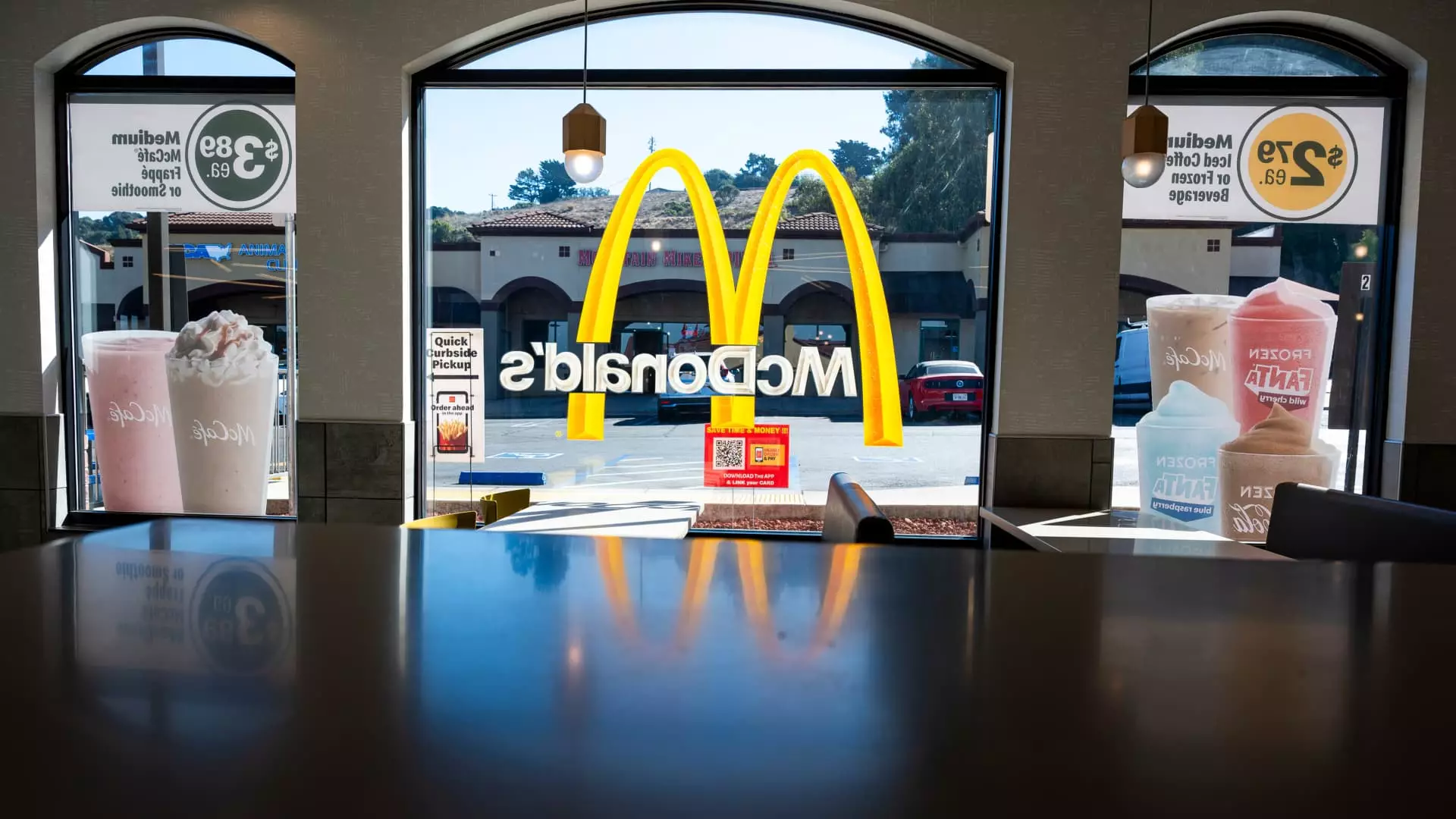As we embark on 2025, the restaurant sector finds itself in a tumultuous landscape, grappling with challenges stemming from extreme weather conditions, changing consumer habits, and an overall cautious economic atmosphere. Executives from major restaurant chains are reminiscent of the old saying, “In like a lion, out like a lamb,” anticipating the year’s temperature of business to oscillate due to both external and internal factors. The beginning of the year has revealed unpredictable complications that have hindered the industry’s growth trajectory.
Notably, establishments such as Restaurant Brands’ Burger King and Popeyes have begun to see a resurgence toward the end of last year, attributing this revival to enticing value-based offers that attracted diners who had reverted to home cooking during challenging times. Surprisingly, even a globally renowned player like McDonald’s experienced a slight uptick in visitation, despite grappling with a 1.4% dip in same-store sales across its U.S. branches. However, as January rolled in, the momentum appeared to stall rapidly, creating skepticism among executives regarding the future of consumer traffic and sales growth.
The apprehensive consumer sentiment has become a recurring theme in the restaurant industry, as Wendy’s CFO Kenneth Cook pointedly noted during a recent conference call: “We’ve started the year facing some overall industry traffic headwinds.” Despite a 3.4% rise in fast-food net sales year-over-year for January, it was a slight decrease from December’s more robust performance of 4.9%. Categories such as breakfast and lunch, typically the bread and butter of fast-food chains, saw a notable decline in traffic, igniting conversations around consumer wariness and changing spending behaviors.
Doug Fry, President of Subway U.S., echoed these concerns in an interview, indicating that patrons are seeking the best value for their expenditure while remaining cautious about sacrificing quality or quantity. This reflects a broader trend where consumers prioritize value-laden offerings, an adjustment necessitated by their uncertain financial outlook.
Weather and External Influences Complicate Forecasts
The beginning of the New Year has not only been marked by consumer caution but has also been shaped significantly by the effects of harsh weather conditions. Chipotle Mexican Grill’s assessment of its sales performance indicates potential damages from wildfires in Los Angeles, which reportedly decreased its same-store traffic growth by 4%. Intriguingly, broader industry traffic dynamics depict a troubling picture as Chipotle experienced a 2% drop in traffic for January, driven by a combination of adverse weather conditions and the quirky calendar placement of New Year’s Day.
Executives are optimistic that as they move into the summer months, comparisons with the previous year’s poor performance will elicit a resurgence in both traffic and sales. However, the uncertainty wrought by significant weather events and shifting economic tides continues to keep the industry on a precarious edge.
Trade Wars and Economic Sentiment
The new landscape of trade policies under the Trump administration further complicates the operational outlook of many restaurant chains that are wary about potential pricing pressures from upcoming tariffs. Companies such as Chipotle, relying heavily on imported goods such as avocados, have cautiously downplayed their exposure to tariffs but remain cognizant of the rising consumer sentiment against escalating prices. Dipping consumer confidence, which reached its lowest levels in seven months by February, signals growing apprehension about inflation and the potential for future price hikes that could influence dining choices.
Fast food giants including Wendy’s and McDonald’s are hedging their bets—while hopeful for a turnaround, they remain cautious about the long-term implications of edible goods rising in cost. The irony of a recovering demand swayed by the unpredictability of operational expenses paints a perplexing picture for both industry players and consumers alike.
Despite the current challenges, there’s a glimmer of hope. Large chains such as McDonald’s are optimistic about an eventual rebound fueled by improved consumer health and expectations for stronger economic conditions as the year unfolds. Executives believe that should lower-income consumers experience financial relief, their spending power could significantly positively impact restaurant sales.
Conversely, challenges are expected to persist for brands such as Starbucks, which have struggled with consistent declines in same-store sales. As the coffee chain halts its fiscal outlook for 2025, it indicates the need for substantial strategic realigning to reclaim market share amidst fierce competition.
While the year 2025 presents a daunting landscape for the restaurant industry, the combination of consumer insight, strategic adaptations, and a slowly revitalizing economy may steer the sector toward calmer waters. Nonetheless, the journey requires vigilance and an astute understanding of evolving consumer preferences, external pressures, and economic indicators built into the industry’s intricate fabric.


Leave a Reply